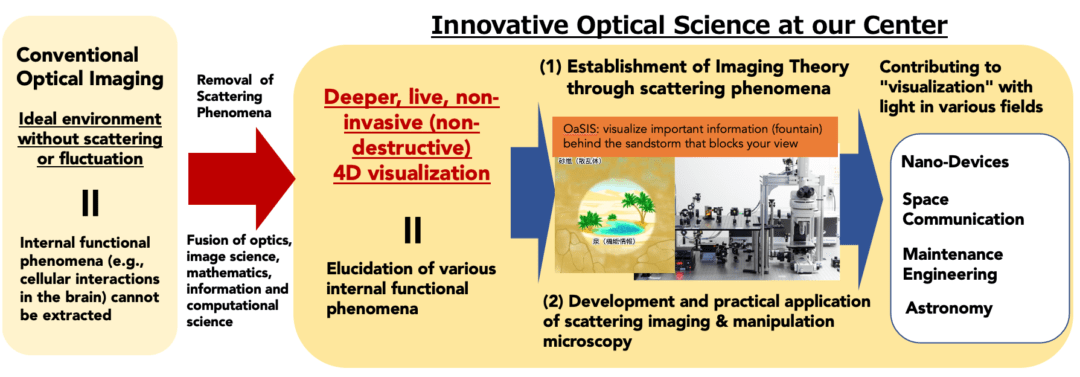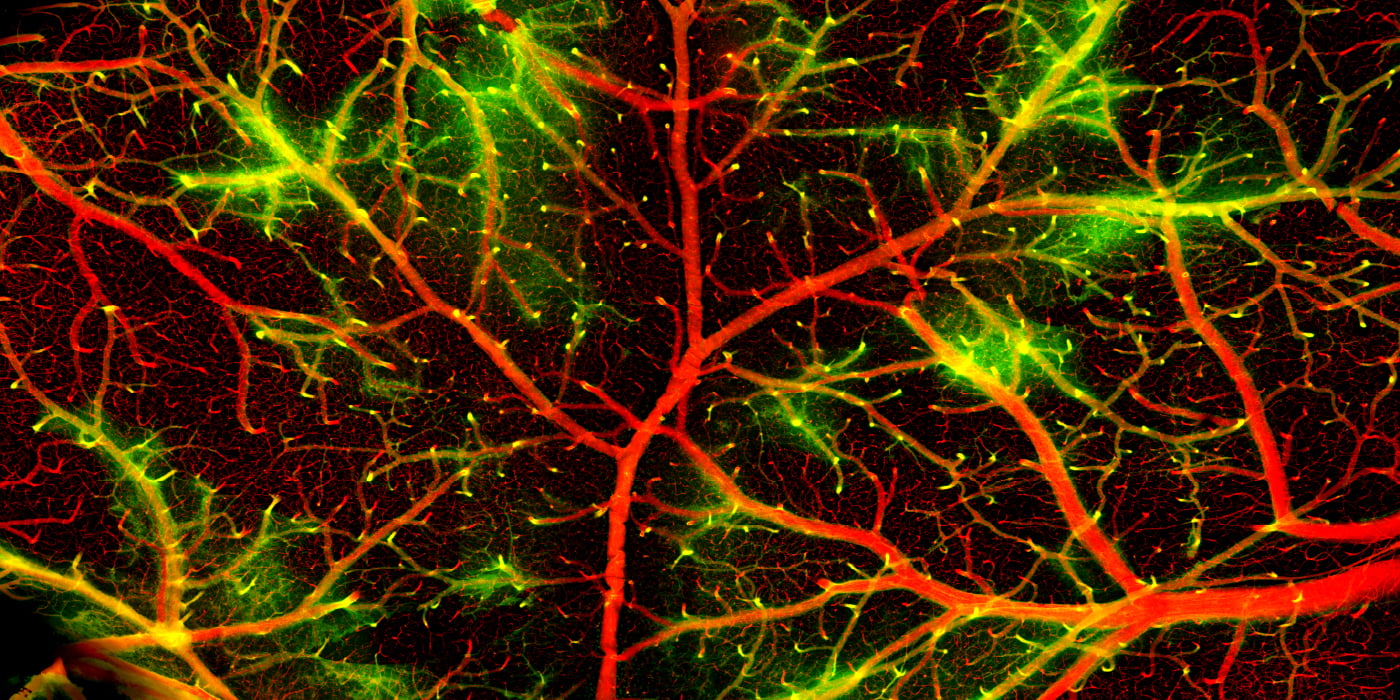Imaging technology has revolutionized science, technology, and manufacturing by making things “visible. Typical examples include microscopes for visualizing small objects and telescopes for observing large celestial objects. In addition, the Nobel Prize in Chemistry was awarded in 2014 for super-resolution microscopy, which exceeds the diffraction limit of light, which was considered the smallest limit of observation when using light. Even with these state-of-the-art imaging techniques, one of the objects that remain unobserved are scattering and fluctuating fields. Scattering media, such as frosted glass, prevent light from traveling straight ahead, and multiple scattering obscures internal information and the image on the other side. This scattering phenomenon occurs on a wide range of scales, from molecular aggregates in small areas to organs and tissues in living organisms, dense fog, heavy rain, artificial structures such as tunnels, and atmospheric fluctuations.
The center is challenging the creation of “imaging theory and technology through scattering media” as a comprehensive methodology to visualize the interior of such multi-scale scattering fields and the scattering fields themselves in a non-destructive and high-resolution manner, by integrating optical sensing and image science with mathematical science and information science (Fig. 1). Based on this “imaging theory and technology through scattering media,” we will realize the acquisition of biofunctional information that surpasses conventional technologies in terms of spatio-temporal resolution, breadth and depth of the observation area, and quality of information, especially in the life sciences and medicine. In addition, we are also working on a technology for internal illumination of scattering media that controls the propagation of light inside the scattering media. This will enable us to advance optogenetics, the manipulation of cellular activity with light, which has seen remarkable progress in recent years, and to utilize this technology in applied research to elucidate brain functions and to restore and manipulate functions. In addition, we will open and standardize the acquired biofunctional information as a huge database, make it available to researchers around the world, and create “imaging mathematical life science” and “imaging mathematical biology” to elucidate biological functions based on image-based mathematical science, thereby solving various problems in life science and biology. Based on “imaging theory and technology through scattering media” we will work together with you to observe and manipulate living organisms that have never been seen. Please contact us if you are interested. Let’s work together.

MATOBA Osamu
Project Leader
Professor, Graduate School of System Informatics
Kobe University


